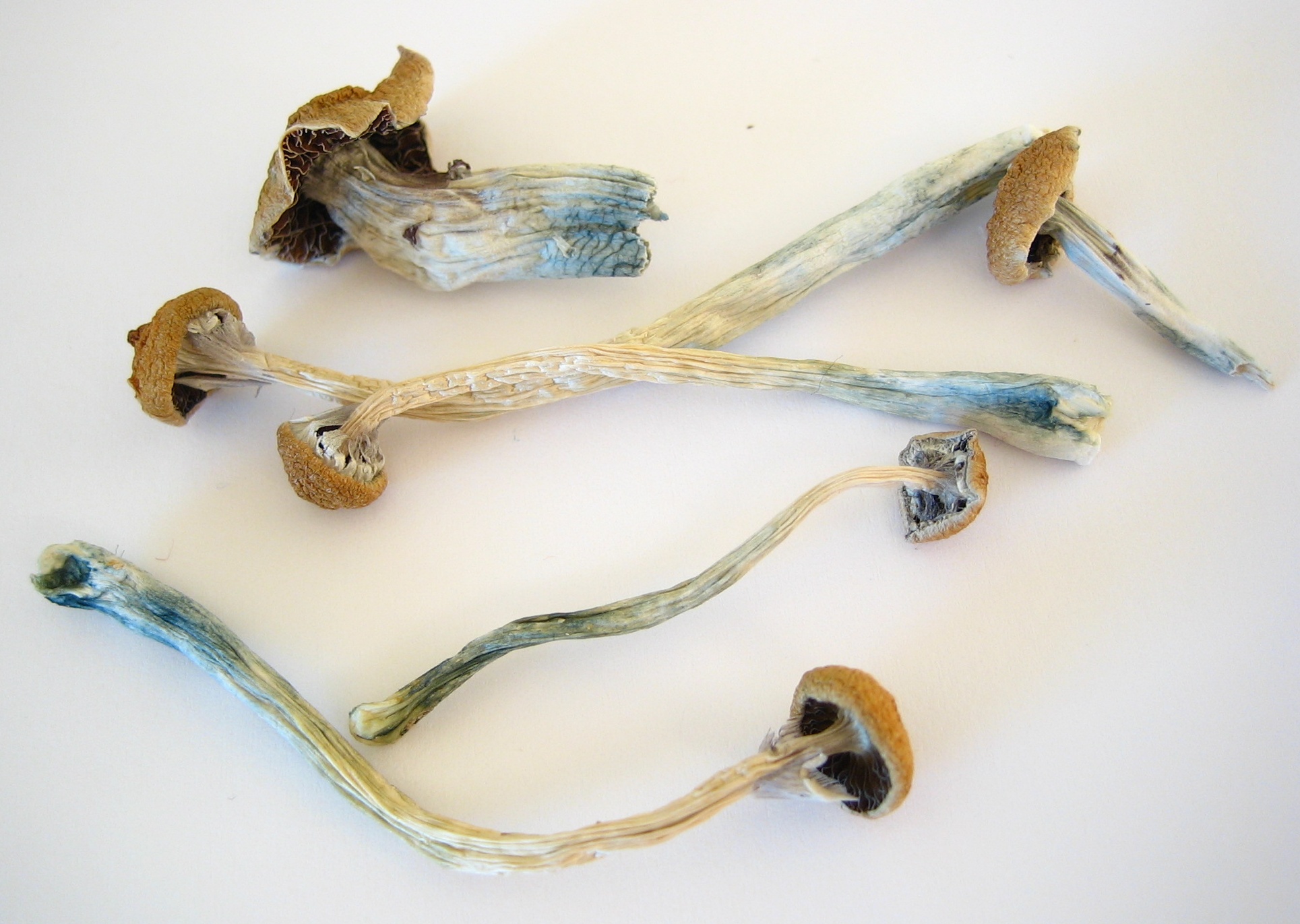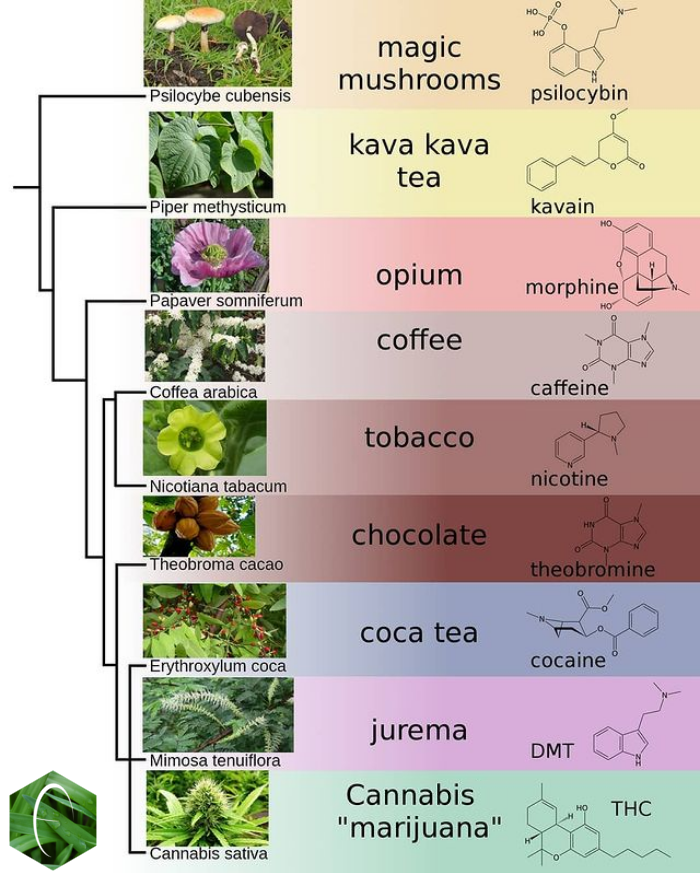|
Gymnopilus Validipes
''Gymnopilus validipes'' is a mushroom in the family Hymenogastraceae. It is widely distributed in North America and Europe. Description * Pileus: 7.5 — 15 cm, convex to broadly convex, margin deeply incurved at first, becoming revolute with age, dry, fibrillose or with small ochraceous brown scales, pale-yellow or ochraceous buff, flesh soft, whitish, yellowish near the gills. *Gills: Adnate to uncinate, close, thin, yellowish white becoming cinnamon. *Spore print: Orangish brown. * Stipe: 10 — 13 cm long, 2.5 – 5 cm. thick, equal or swelling in the middle, fleshy-fibrous, solid, elastic, fibrillose, concolorous, white within, the cortina leaves only a faint ring on the stalk. The specific epithet ''validipes'' means "having a robust stalk". *Taste: Mild, standing in contrast to closely related bitter-tasting species. *Odor: Pleasant. *Microscopic features: Spores 8 — 10 X 5 — 6 μm, ellipsoid. ''Gymnopilus validipes'' contains the hallucinogens psilocybin a ... [...More Info...] [...Related Items...] OR: [Wikipedia] [Google] [Baidu] |
Fungus
A fungus ( : fungi or funguses) is any member of the group of eukaryotic organisms that includes microorganisms such as yeasts and molds, as well as the more familiar mushrooms. These organisms are classified as a kingdom, separately from the other eukaryotic kingdoms, which by one traditional classification include Plantae, Animalia, Protozoa, and Chromista. A characteristic that places fungi in a different kingdom from plants, bacteria, and some protists is chitin in their cell walls. Fungi, like animals, are heterotrophs; they acquire their food by absorbing dissolved molecules, typically by secreting digestive enzymes into their environment. Fungi do not photosynthesize. Growth is their means of mobility, except for spores (a few of which are flagellated), which may travel through the air or water. Fungi are the principal decomposers in ecological systems. These and other differences place fungi in a single group of related organisms, named the ''Eumycota'' (''true f ... [...More Info...] [...Related Items...] OR: [Wikipedia] [Google] [Baidu] |
Psilocin
Psilocin (also known as 4-HO-DMT, 4-hydroxy DMT, psilocine, psilocyn, or psilotsin) is a substituted tryptamine alkaloid and a serotonergic psychedelic substance. It is present in most psychedelic mushrooms together with its phosphorylated counterpart psilocybin. Psilocin is a Schedule I drug under the Convention on Psychotropic Substances. Acting on the 5-HT2A receptors, psilocin modulates the production and reuptake of serotonin. The mind-altering effects of psilocin are highly variable and subjective and resemble those of LSD and DMT. Chemistry Psilocin and its phosphorylated cousin, psilocybin, were first isolated and named in 1958 by Swiss chemist Albert Hofmann. Hofmann obtained the chemicals from laboratory-grown specimens of the entheogenic mushroom ''Psilocybe mexicana''. Hofmann also succeeded in finding synthetic routes to these chemicals. Psilocin can be obtained by dephosphorylation of natural psilocybin under strongly acidic or under alkaline conditions (hyd ... [...More Info...] [...Related Items...] OR: [Wikipedia] [Google] [Baidu] |
Fungi Of North America
A fungus ( : fungi or funguses) is any member of the group of eukaryotic organisms that includes microorganisms such as yeasts and molds, as well as the more familiar mushrooms. These organisms are classified as a kingdom, separately from the other eukaryotic kingdoms, which by one traditional classification include Plantae, Animalia, Protozoa, and Chromista. A characteristic that places fungi in a different kingdom from plants, bacteria, and some protists is chitin in their cell walls. Fungi, like animals, are heterotrophs; they acquire their food by absorbing dissolved molecules, typically by secreting digestive enzymes into their environment. Fungi do not photosynthesize. Growth is their means of mobility, except for spores (a few of which are flagellated), which may travel through the air or water. Fungi are the principal decomposers in ecological systems. These and other differences place fungi in a single group of related organisms, named the ''Eumycota'' (''true fungi' ... [...More Info...] [...Related Items...] OR: [Wikipedia] [Google] [Baidu] |
Psychedelic Tryptamine Carriers
Psychedelics are a subclass of hallucinogenic drugs whose primary effect is to trigger non-ordinary states of consciousness (known as psychedelic experiences or "trips").Pollan, Michael (2018). ''How to Change Your Mind: What the New Science of Psychedelics Teaches Us About Consciousness, Dying, Addiction, Depression, and Transcendence'' Sometimes, they are called classic hallucinogens, serotonergic hallucinogens, or serotonergic psychedelics, and the term ''psychedelics'' is used more broadly to include all hallucinogens; this article uses the narrower definition of ''psychedelics''. Psychedelics cause specific psychological, visual, and auditory changes, and often a substantially altered state of consciousness.Leary, Timothy; Metzner, Ralph (1964). ''The Psychedelic Experience: A Manual Based on The Tibetan Book of the Dead'' Psychedelic states are often compared to meditative, psychodynamic or transcendental types of alterations of mind. The "classical" psychedelics, the psyc ... [...More Info...] [...Related Items...] OR: [Wikipedia] [Google] [Baidu] |
Psychoactive Fungi
This is a list of psychoactive plants, fungi, and animals. Plants Psychoactive plants include, but are not limited to, the following examples: * ''Cannabis'': cannabinoids * Tobacco: nicotine and beta-carboline alkaloids * Coca: cocaine * Opium Poppy: morphine, codeine, thebaine, papaverine, noscapine, and narceine * '' Salvia divinorum'': salvinorin A * Khat: cathine and cathinone * Kava: kavalactones * Nutmeg: myristicin * Nightshade (''Solanaceae'') plants containing hyoscyamine, atropine, and scopolamine: ** ''Datura'' ** Deadly nightshade (''Atropa belladonna'') ** Henbane (''Hyoscyamus niger'') ** Mandrake (''Mandragora officinarum'') ** Other ''Solanaceae'' * Psychoactive cacti, which contain mainly mescaline: ** Peyote ** Other ''Lophophora'' ** Peruvian Torch cactus ** San Pedro cactus ** Other ''Echinopsis'' * Minimally psychoactive plants that contain mainly caffeine and theobromine: ** Coffee ** Tea (also contains theanine) ** Guarana ** Yerba Mate ** Coc ... [...More Info...] [...Related Items...] OR: [Wikipedia] [Google] [Baidu] |
Entheogens
Entheogens are psychoactive substances that induce alterations in perception, mood, consciousness, cognition, or behavior for the purposes of engendering spiritual development or otherwiseRätsch, Christian, ''The Encyclopedia of Psychoactive Plants: Ethnopharmacology and Its Applications'' pub. Park Street Press 2005 in sacred contexts. Anthropological study has established that entheogens are used for religious, magical, shamanic, or spiritual purposes in many parts of the world. Entheogens have traditionally been used to supplement many diverse practices geared towards achieving transcendence, including divination, meditation, yoga, sensory deprivation, healings, asceticism, prayer, trance, rituals, chanting, imitation of sounds, hymns like peyote songs, drumming, and ecstatic dance. The psychedelic experience is often compared to non-ordinary forms of consciousness such as those experienced in meditation, near-death experiences, and mystical experiences. Ego dissolu ... [...More Info...] [...Related Items...] OR: [Wikipedia] [Google] [Baidu] |
List Of Gymnopilus Species
This is a list of species in the agaric fungi genus ''Gymnopilus''. There are about 200 species in the widespread genus. *'' G. abramsii'' Murrill (1917) *'' G. aculeatus'' (Bres. & Roum.) Singer (1951) *'' G. acystidiatus'' Guzm.-Dáv. & Guzmán (1991) *'' G. aeruginosus'' (Peck) Singer (1951) *'' G. alabamensis'' Murrill (1917) *'' G. alienus'' (Peck) Murrill (1917) *'' G. allantopus'' (Berk.) Pegler (1965) *'' G. alpinus'' (Singer) Singer (1951) *'' G. amarissimus'' Murrill (1941) *'' G. angustifolius'' Hesler (1969) *'' G. anomalus'' B.J. Rees (2002) *'' G. arenicola'' Hesler (1969) *'' G. arenophilus'' A. Ortega & Esteve-Rav. (2005) *'' G. areolatus'' Murrill (1943) *'' G. armillatus'' Murrill (1940) *'' G. aromaticus'' Murrill Murrill (1917) *'' G. aurantiacus'' Hesler (1969) *'' G. aurantiobrunneus'' Z.S. Bi (1986) *'' G. aurantiophyllus'' Hesler (1969) *'' G. aureobrunneus'' (Berk. & M.A. Curtis) Murrill *'' G. austropicreus'' B.J. Rees (2001) *'' G. austro ... [...More Info...] [...Related Items...] OR: [Wikipedia] [Google] [Baidu] |
List Of Psilocybin Mushrooms
Psilocybin mushrooms are mushrooms which contain the hallucinogenic substances psilocybin, psilocin, baeocystin and norbaeocystin. The mushrooms are collected and grown as an entheogen and recreational drug, despite being illegal in many countries. Many psilocybin mushrooms are in the genus '' Psilocybe'', but species across several other genera contain the drugs. General * ''Conocybe'' * ''Galerina'' * ''Gymnopilus'' * ''Inocybe'' * ''Panaeolus'' * ''Pholiotina'' * ''Pluteus'' * ''Psilocybe'' ''Conocybe'' *'' Conocybe siligineoides'' R. Heim *''Conocybe velutipes'' ( Velen.) Hauskn. & Svrcek ''Galerina'' *'' Galerina steglichii'' Besl ''Gymnopilus'' *''Gymnopilus aeruginosus'' (Peck) Singer (photo) *'' Gymnopilus braendlei'' (Peck) Hesler *''Gymnopilus cyanopalmicola'' Guzm.-Dáv *''Gymnopilus dilepis'' (Berk. & Broome) Singer *''Gymnopilus dunensis'' H. Bashir, Jabeen & Khalid *''Gymnopilus intermedius'' (Singer) Singer *''Gymnopilus lateritius'' (Pat.) Murrill *''Gymn ... [...More Info...] [...Related Items...] OR: [Wikipedia] [Google] [Baidu] |
Psilocybin Mushrooms
Psilocybin mushrooms, commonly known as magic mushrooms, are a polyphyletic informal group of fungi that contain psilocybin which turns into psilocin upon ingestion. Biological genera containing psilocybin mushrooms include ''Psilocybe'', ''Panaeolus'' (including ''Copelandia''), ''Inocybe'', ''Pluteus'', ''Gymnopilus'', and ''Pholiotina''. Psilocybin mushrooms have been and continue to be used in indigenous New World cultures in religious, divinatory, or spiritual contexts. Psilocybin mushrooms are also used as recreational drugs. They may be depicted in Stone Age rock art in Africa and Europe, but are most famously represented in the Pre-Columbian sculptures and glyphs seen throughout North, Central and South America. History Early Prehistoric rock arts near Villar del Humo in Spain, suggests that ''Psilocybe hispanica'' was used in religious rituals 6,000 years ago. The hallucinogenic species of the Psilocybe genus have a history of use among the native peoples of Mesoa ... [...More Info...] [...Related Items...] OR: [Wikipedia] [Google] [Baidu] |
Great Lakes
The Great Lakes, also called the Great Lakes of North America, are a series of large interconnected freshwater lakes in the mid-east region of North America that connect to the Atlantic Ocean via the Saint Lawrence River. There are five lakes, which are Lake Superior, Superior, Lake Michigan, Michigan, Lake Huron, Huron, Lake Erie, Erie, and Lake Ontario, Ontario and are in general on or near the Canada–United States border. Hydrologically, lakes Lake Michigan–Huron, Michigan and Huron are a single body joined at the Straits of Mackinac. The Great Lakes Waterway enables modern travel and shipping by water among the lakes. The Great Lakes are the largest group of freshwater lakes on Earth by total area and are second-largest by total volume, containing 21% of the world's surface fresh water by volume. The total surface is , and the total volume (measured at the low water datum) is , slightly less than the volume of Lake Baikal (, 22–23% of the world's surface fresh water ... [...More Info...] [...Related Items...] OR: [Wikipedia] [Google] [Baidu] |
United States
The United States of America (U.S.A. or USA), commonly known as the United States (U.S. or US) or America, is a country primarily located in North America. It consists of 50 states, a federal district, five major unincorporated territories, nine Minor Outlying Islands, and 326 Indian reservations. The United States is also in free association with three Pacific Island sovereign states: the Federated States of Micronesia, the Marshall Islands, and the Republic of Palau. It is the world's third-largest country by both land and total area. It shares land borders with Canada to its north and with Mexico to its south and has maritime borders with the Bahamas, Cuba, Russia, and other nations. With a population of over 333 million, it is the most populous country in the Americas and the third most populous in the world. The national capital of the United States is Washington, D.C. and its most populous city and principal financial center is New York City. Paleo-Americ ... [...More Info...] [...Related Items...] OR: [Wikipedia] [Google] [Baidu] |
Cespitose
This glossary of botanical terms is a list of definitions of terms and concepts relevant to botany and plants in general. Terms of plant morphology are included here as well as at the more specific Glossary of plant morphology and Glossary of leaf morphology. For other related terms, see Glossary of phytopathology, Glossary of lichen terms, and List of Latin and Greek words commonly used in systematic names. A B ... [...More Info...] [...Related Items...] OR: [Wikipedia] [Google] [Baidu] |









